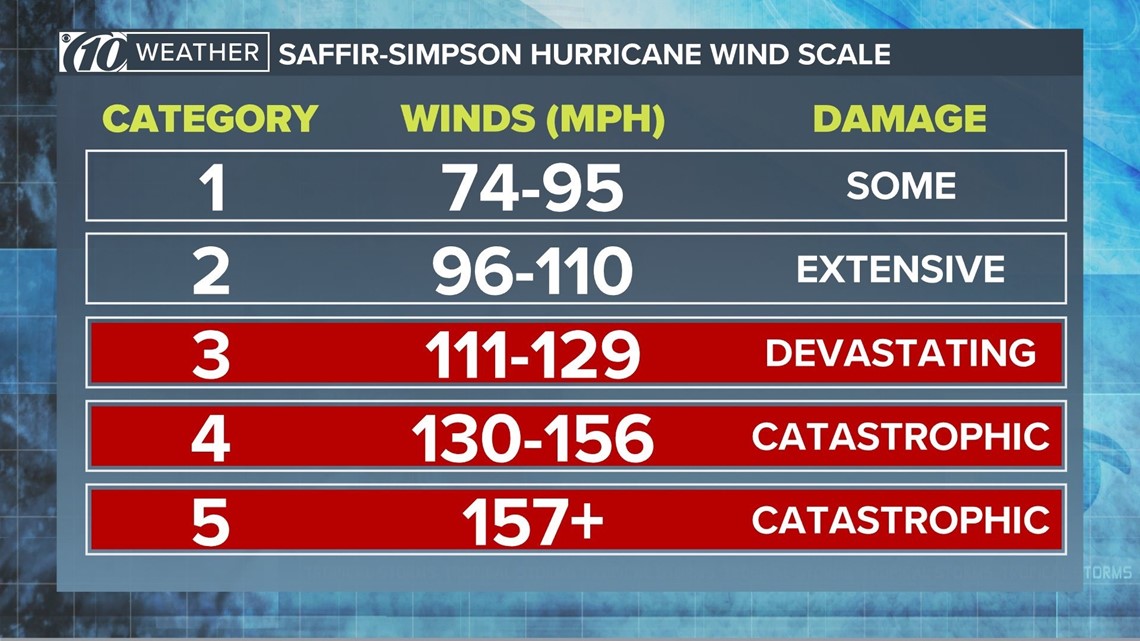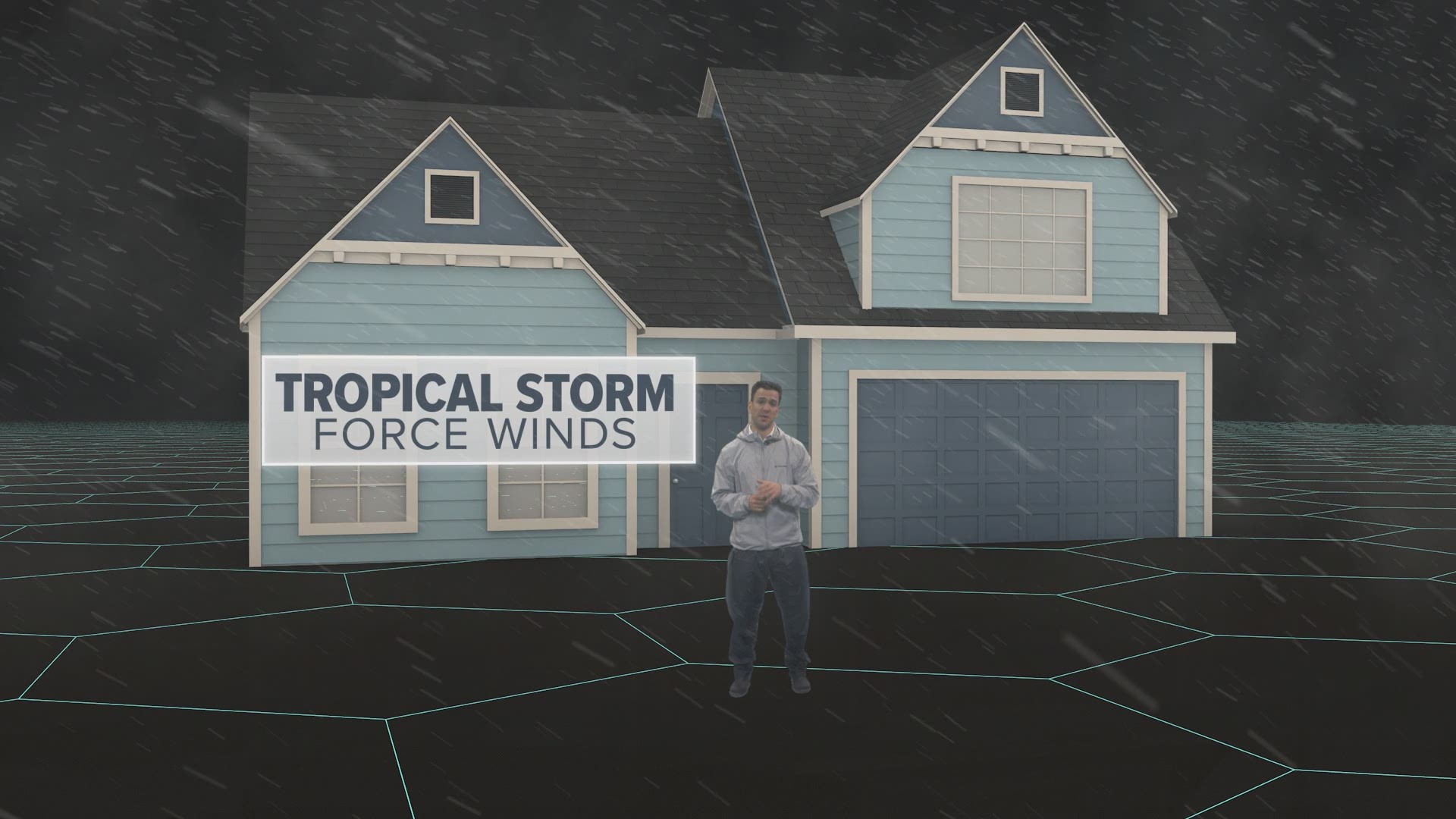TAMPA, Fla — Hurricane categories are measured by the Saffir-Simpson Hurricane Wind Scale, originally developed by wind engineer Herb Saffir and meteorologist Bob Simpson, according to the National Hurricane Center.
While tropical storms and categories 1 and 2 are not to be taken lightly, it's when we reach Category 3 that a storm reaches "major hurricane" status and has greater increase for loss of life and property damage.
Here is a breakdown of the storm categories, as explained by the National Hurricane Center.
Tropical Depression
Wind speeds: 38 mph or less
Tropical Storm
Wind speeds: 39 mph - 73 mph
Category 1
Wind speeds: 74 to 95 mph
Very dangerous winds will produce some damage: Well-constructed frame homes could have damage to roof, shingles, vinyl siding and gutters. Large branches of trees will snap and shallowly rooted trees may be toppled. Extensive damage to power lines and poles likely will result in power outages that could last a few to several days.
Category 2
Wind speeds: 96 to 110 mph
Extremely dangerous winds will cause extensive damage: Well-constructed frame homes could sustain major roof and siding damage. Many shallowly rooted trees will be snapped or uprooted and block numerous roads. Near-total power loss is expected with outages that could last from several days to weeks.
Category 3
Wind speeds: 111 to 129 mph
Devastating damage will occur: Well-built framed homes may incur major damage or removal of roof decking and gable ends. Many trees will be snapped or uprooted, blocking numerous roads. Electricity and water will be unavailable for several days to weeks after the storm passes.


Category 4
Wind speeds: 130 to 156 mph
Catastrophic damage will occur: Well-built framed homes can sustain severe damage with loss of most of the roof structure and/or some exterior walls. Most trees will be snapped or uprooted and power poles downed. Fallen trees and power poles will isolate residential areas. Power outages will last weeks to possibly months. Most of the area will be uninhabitable for weeks or months.
Category 5
Wind speeds: 157 or greater
Catastrophic damage will occur: A high percentage of framed homes will be destroyed, with total roof failure and wall collapse. Fallen trees and power poles will isolate residential areas. Power outages will last for weeks to possibly months. Most of the area will be uninhabitable for weeks or months.
To get into more specifics about what these categories mean for different types of buildings, homes, apartments, and power and water systems, click on this link.
The other issue with a hurricane is the storm surge, which can cause coastal communities to flood. There is no storm surge scale. The National Hurricane Center said it does not believe creating such a scale would be helpful.
"For example, if 2008’s Hurricane Ike had made landfall in Palm Beach, Florida, the resulting storm surge would have been only 8’, rather than the 20’ that occurred where Ike actually made landfall on the upper Texas coast," the NHC said. "These greatly differing surge impacts arise from differences in the local bathymetry (the shallow Gulf waters off of Texas enhance storm surge while the deep ocean depths off of southeastern Florida inhibit surge). The proposed storm surge scales that consider storm size do not consider these local factors that play a crucial role in determining actual surge impacts."
Meteorologist Natalie Ferrari Explains: What is storm surge and why should I care about it?
What other people are reading right now:
- Hurricane Dorian could be powerful Category 4 storm by the time it nears Florida
- Live blog: Hurricane Dorian to become major hurricane over next few days
- Hurricane Headquarters: Track the tropics, find your evacuation zone
- Gov. Ron DeSantis declares state of emergency ahead of Hurricane Dorian
- Where to get sandbags to prepare for Hurricane Dorian
►Make it easy to keep up-to-date with more stories like this. Download the 10News app now.
Have a news tip? Email desk@wtsp.com, or visit our Facebook page or Twitter feed.

